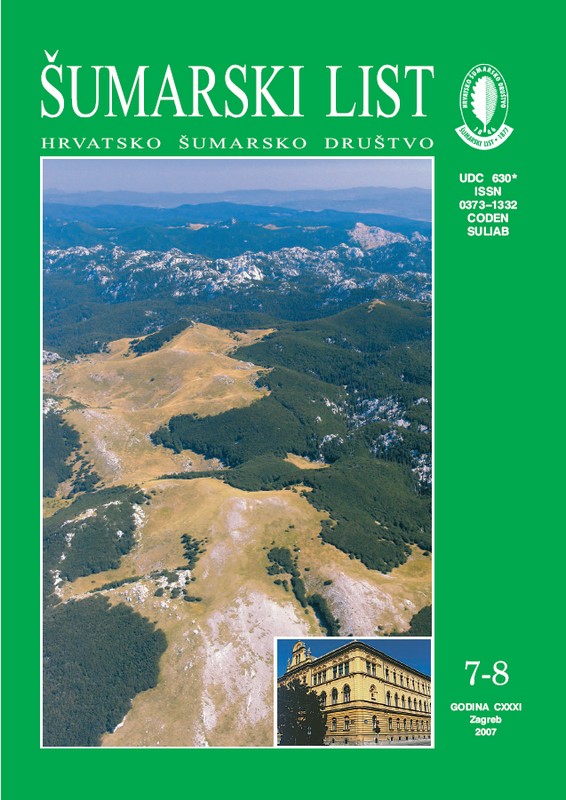Summary: Photointerpretation of colour infrared aerial photographs (CIR) provides reliable statistical data on forest damage. Inventorying forest damage with aerial photographs is based on the assessment of the extent of damage to particular trees (crowns) recorded in aerial photographs. A precondition for the achievement of such results is a good quality photointerpretation key. A photointerpretation key was made for the principal tree species (oak, ash) based on the method of mirroring tree species and damage indicators. Damage indicators (damage-O, mean damage-SO, damage index-IO, mean damage1-SO1) were also calculated for each tree species, for all the interpreted species together, per surveying stripes, for management units, and for the entire area of the Spačva basin (Forest Administration Vinkovci). CIR aerial photographs were interpreted to obtain the status of forest stands in the surveyed area. For the whole study area (5,575 ha), a total of 17,439 trees were interpreted on the basis of a systematic 100 x 100 m sample. Mean damage (SO) for all tree species was found to be 26.18 %, for pedunculate oak 31.80 % and for ash 17.93 %. It may be concluded that the degree of damage of inventoried forests is between low and medium. The considerable damage index (IO) of 45.27 % for pedunculate oak in the Spačva basin means that the said percentage of pedunculate oak in the surveyed area is damaged by more than 25 %. In the entire surveyed area considerable ash damage amounts to 26.15 %. CIR aerial photographs were interpreted in order to assess the condition of forest stands in the study area. Aerial photographs are a lasting document of forest stand condition. In aerial photographs observations may be repeated, checked, updated and continued at any given moment
Key words: colour infrared aerial (CIR) photographs; digital orthophoto (DOP); forest damage; photointerpretation key; Spačva basin |



